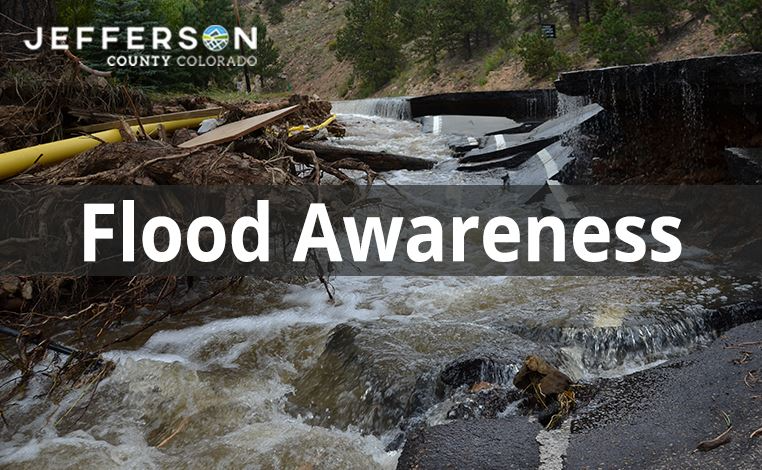Flash Flood Safety in the Colorado Foothills
Many people think they are not in danger of flooding if they don’t live near a stream or creek. Unfortunately, this is not true. Flooding is the nation’s number one natural disaster. Flash floods, inland flooding and seasonal storms flood every region of the country and floodplain maps don’t show all areas at risk! Flooding can and often does occur outside the mapped floodplain. Flooding often occurs along smaller streams and creeks that are not shown on any flood maps. Non-creek flooding can occur from overwhelmed storm sewers, low-lying areas that do not have proper drainage, or water mains that break. Much of the true risk of flooding is its unpredictability.

Colorado’s flood season, which is historically from May through October, includes both snowmelt and thunderstorm flooding. Snowmelt floods result from the melting of the winter snowpack in the high mountain areas which becomes spring runoff. Thunderstorm floods are caused by intense rain over relatively small areas. Because there is little to no warning time, the term flash flood is often used to describe thunderstorm floods. Between 20 and 30 large floods occur in Colorado every year and Colorado experiences a major flood disaster roughly once every five years.
The County’s Planning & Zoning Division can be contacted online or by phone at 303-271-8700. P&Z staff will help you with any questions you may have and is available to meet you onsite to provide assistance on specific flooding and/or drainage issues. P&Z also has copies of FEMA Elevation Certificates for buildings constructed in the floodplains since 2004.
You can reduce your risk of flooding by being prepared and knowing how to respond when there is a flood. Below are links to learn more about flood safety, flood recovery, flood Insurance, how to be prepared before a flood, how to develop an emergency plan, and what to do during a flood.
Flood Resources:
- Floodplain Management Program
- Floods and Water Quality for Water Supply Wells (PDF)
- Emergency Resources
- Sign up to Receive Emergency Notifications
Quick Tips for Flood Safety
- Be aware of possible flash flooding hazards. If there is any possibility of a flash flood, move immediately to higher ground. Do not wait for instructions to move.
- Listen to radio or television stations for local information.
- Be aware of streams, drainage channels, canyons or other areas known to flood suddenly. Flash floods can occur in these areas without such typical warning signs as rain clouds or heavy rain.
- If local authorities issue a flood watch, prepare to evacuate.
- Secure your home. If you have time, tie down or bring outdoor equipment and lawn furniture inside. Move essential items to the upper floors.
- If instructed, turn off utilities at the main switches or valves. Disconnect electrical appliances. Do not touch electrical equipment if you are wet or standing in water.
- Fill bathtubs with water in case water becomes contaminated or services cut off. Before filling the tub, sterilize it with a diluted bleach solution.
- Do not walk through moving water. Six inches of moving water can knock you off your feet. If you must walk in a flooded area, walk where the water is not moving. Use a stick to check the firmness of the ground in front of you.
- Do not drive into flooded areas. Six inches of water will reach the bottom of most passenger cars causing loss of control and possible stalling. A foot of water will float many vehicles. Two feet of water will wash away almost all vehicles. If floodwaters rise around your car, abandon the car and move to higher ground, if you can do so safely. You and your vehicle can be quickly swept away as floodwaters rise.
~JeffCO.us
Selling Your Home?
Get your home's value - our custom reports include accurate and up to date information.




